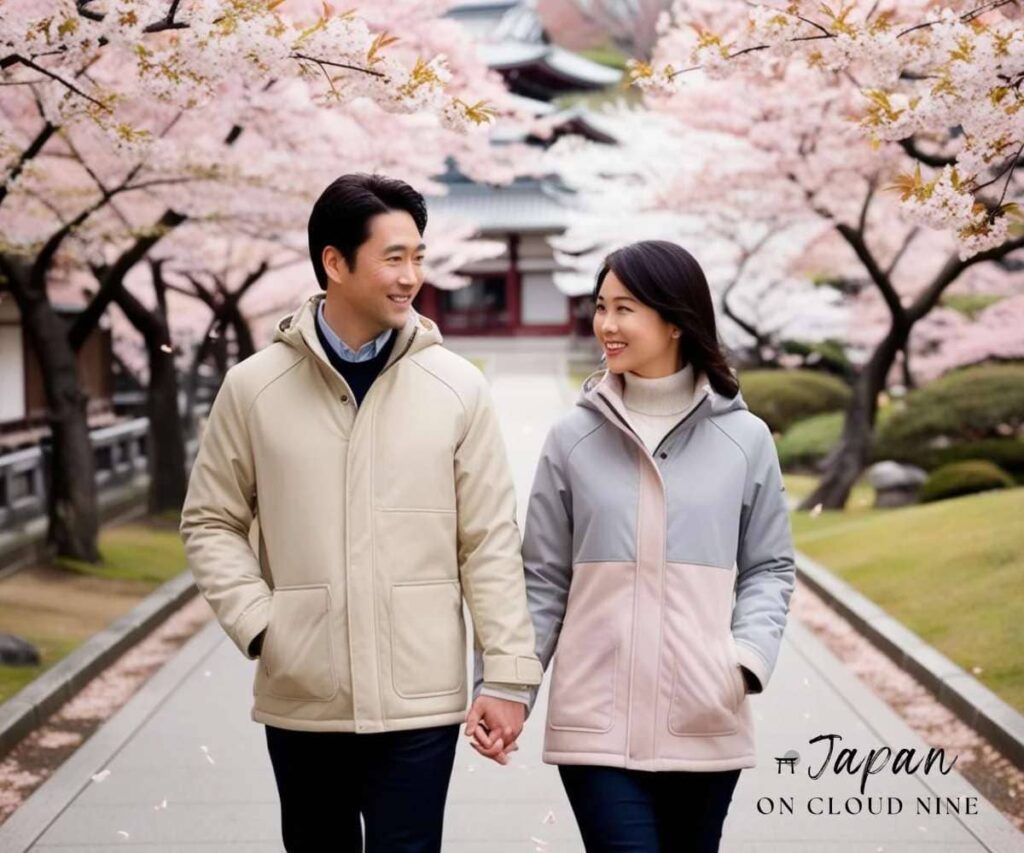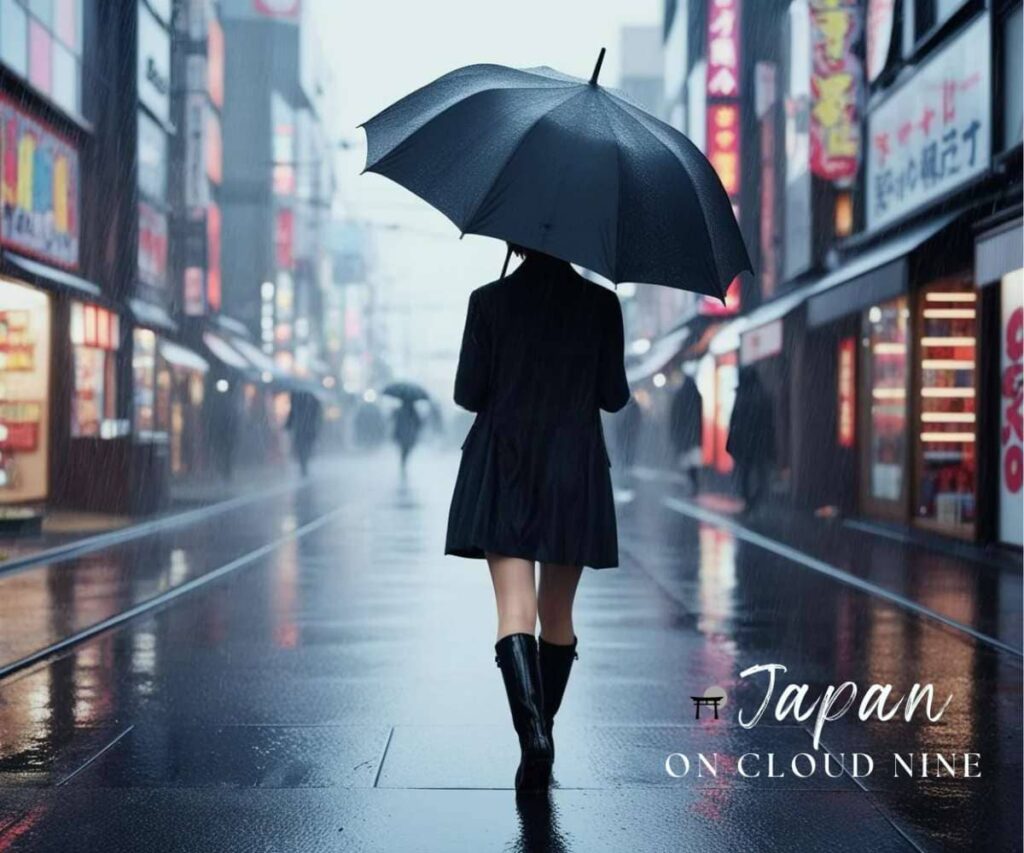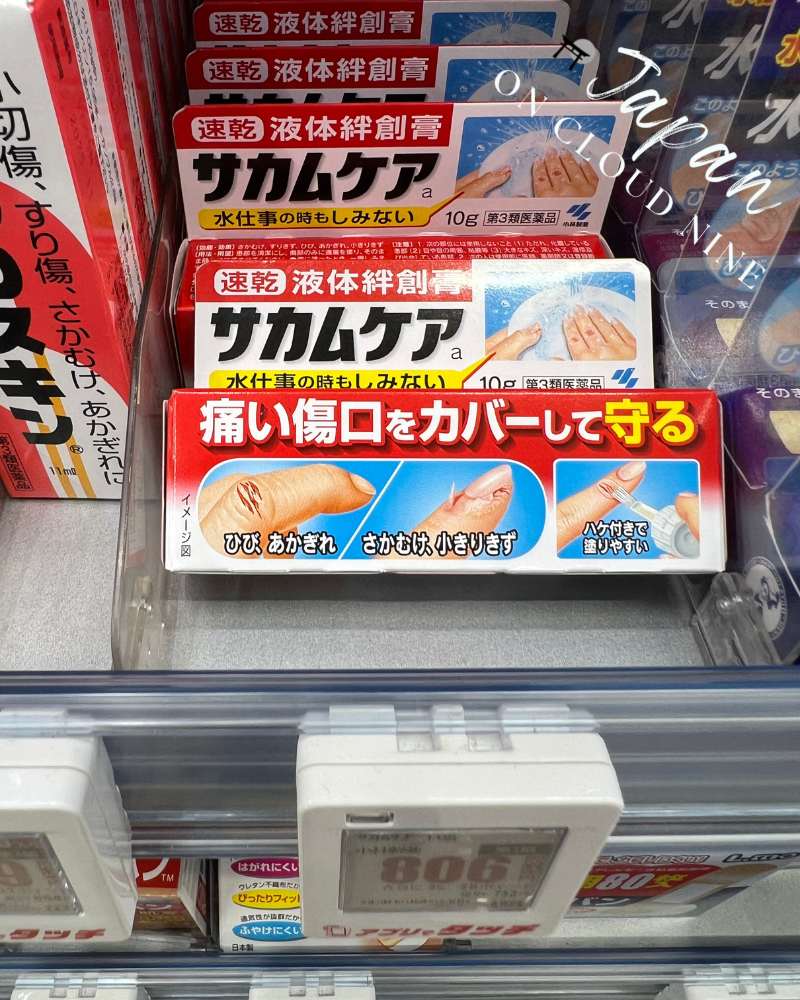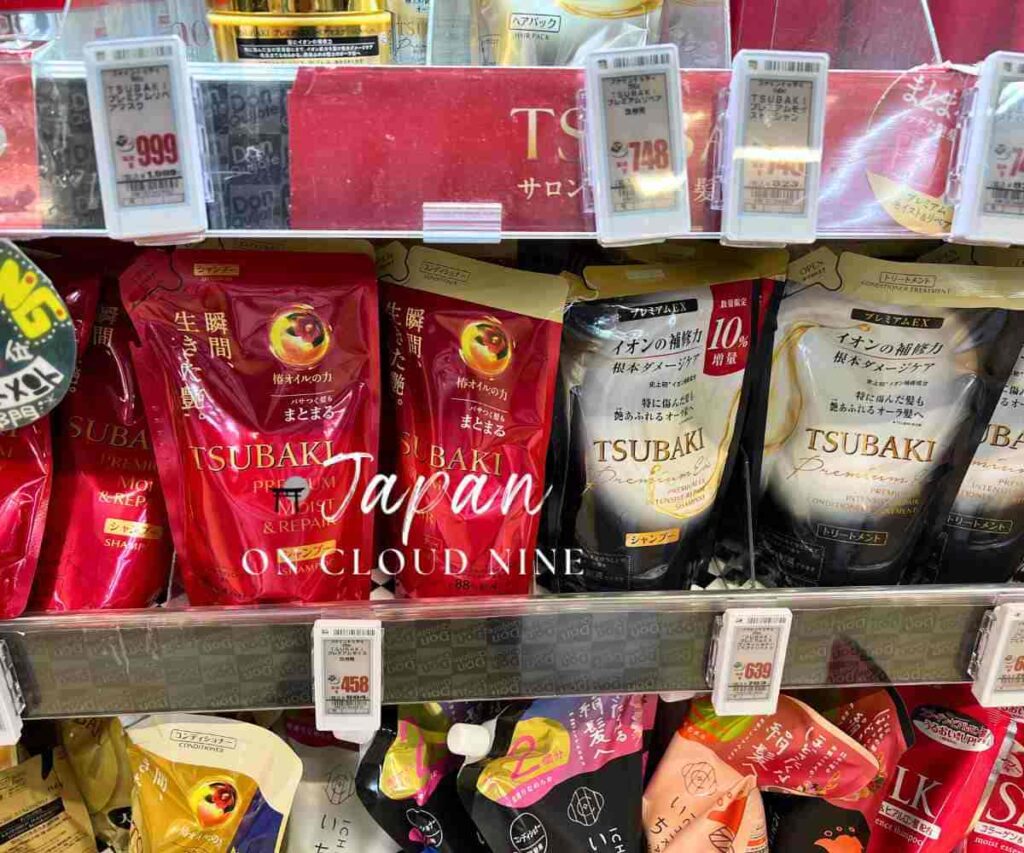Don’t Visit Japan in Spring Without This : The Packing List You’ll Wish You Had
Are you heading to Japan this spring to experience the breathtaking cherry blossoms? If so, you’re in for an unforgettable adventure!
But before you start daydreaming about sakura-filled parks and delicious seasonal treats, let’s talk about something important—packing.
Spring in Japan is a magical time, but the weather can be unpredictable. It can go from cold in the morning to pleasantly warm in the afternoon to chilly in the evening, with occasional rain showers that might catch you off guard.
And on top of that, if this is your first time traveling to Japan, you might not realize that some everyday essentials from home are hard to find (or surprisingly expensive) in Japan.
No worries—I’ve got you covered! This guide will help you pack smartly, stay comfortable, and avoid unnecessary stress during your cherry blossom trip.
Want to make your Japan trip planning as simple and stress-free as possible? Plan smarter, travel better, and save time, stress, and money with my COMPLIMENTARY 2-Day Tokyo Japan Travel Itinerary and Guide.
Or check out my done-for-you Ultimate Japan Travel Itinerary and Guide (14 Days, Tokyo – Kyoto – Osaka – Hakone – Hiroshima) here.
Clothing: Dress for Unpredictable Spring Weather
Spring in Japan (March to May) is one of the most beautiful seasons, and brings mild temperatures, typically ranging from 4°C to 20°C (39°F to 68°F), depending on the region. In the northern areas like Hokkaido, temperature could drop as low as -10°C (2°F).
But don’t let those numbers fool you—mornings and evenings can be chilly, and the occasional spring breeze can make it feel even colder.
The actual “feels like” temperature can vary due to factors like wind chill, sudden rain showers, and temperature drops in the evenings.
Here’s what you need to pack to stay comfortable and stylish while enjoying cherry blossom season:
1 . Layering Is Key
The best way to dress for Japan in spring is to wear layers that you can adjust throughout the day.
Mornings and evenings can be chilly, while afternoons are often mild and pleasant. A layering system helps you stay comfortable throughout the day, no matter how the temperature shifts.
Light Jacket or Coat (A Must-Have!)
- Choose a lightweight but warm outer layer, such as a trench coat, windbreaker, or packable down jacket.
- If you’re traveling in early spring (March to early April), a warmer jacket like a thin wool coat or a fleece-lined windbreaker will keep you cozy.
- If you’re visiting in late April to May, you can get by with a lighter jacket like a denim jacket, bomber jacket, or a water-resistant shell.

🌸 Pro Tip: Many locals in Japan wear stylish yet practical outerwear. If you’re looking for something versatile, opt for neutral tones (beige, black, gray), to easily mix and match with different outfits!
Long-Sleeve Tops & Sweaters for Chilly Mornings and Nights
- Pack a mix of long-sleeve shirts, thin sweaters, or cardigans that you can easily put on or take off.
- Heat-retaining inner layers (like Uniqlo’s Heattech inner shirts) are great for chilly days without adding bulk.
- A lightweight hoodie or zip-up fleece can be a cozy extra layer for early mornings and night strolls.
🌸 Pro Tip: Japan’s heat and/or air conditioning inside trains, cafes, and malls is usually not as strong as in Western countries, so you might not feel as warm indoors. Having an extra layer handy is always a good idea.
T-Shirts or Light Blouses for Warmer Afternoons
- On warmer days (especially in late April and May), a simple t-shirt, cotton blouse, or breathable top is perfect for daytime sightseeing.
- If you’re someone who tends to get hot easily, go for moisture-wicking fabrics to stay fresh while walking.

🌸 Pro Tip: You’ll likely be taking tons of photos with cherry blossoms, so pack at least one pastel or floral top to complement the beautiful pink surrounding.
Comfortable Pants, Jeans, or Leggings
- Jeans or chinos are great for their versatility and comfort during cooler days.
- Loose, flowy pants or midi skirts with leggings work well for a more fashionable and comfortable look.
- An additional note that in Japan, leggings are considered inner wear, so you will see Japanese women wear leggings PAIRED WITH their skirts and dresses. Leggings aren’t worn as pants out on the streets.
- If you’re planning to hike or visit parks, stretchy or travel-friendly pants will be the most practical.
🌸 Pro Tip: Avoid tight jeans or stiff materials—you’ll be walking A LOT and throughout the day. Comfort is key!
Scarf or Shawl (A Surprisingly Useful Item!)
- A light scarf or pashmina helps keep you warm on chilly mornings and evenings. When the temperature gets higher and warmer in the afternoon, take it off and easily put away in your backpack.
- You can also use it as a cover-up in temples and shrines, where modest dress is required.
- A larger shawl doubles as a blanket for picnics under the cherry blossoms! Convenient, right?
🌸 Pro Tip: Many Japanese women wear elegant scarves as part of their outfits, so you’ll blend right in while staying cozy!
2 . Be Prepared for Rainy Days
Spring in Japan comes with occasional sudden rain showers, so it’s best to be prepared. How, you say?
Compact Umbrella
- A small, foldable umbrella is easy to carry in your bag, and an every day essential in Japan. It protect you from rain, harsh sun lights, and snow.
- If you forget one, don’t worry! Convenience stores and shops sell affordable umbrellas everywhere in Japan.

🌸 Fun Fact: Do you know that umbrellas are the number 1 item that get stolen in Japan? Speaks volume to how unpredictable the weather here could be.
Light Waterproof Jacket or Poncho
- A water-resistant jacket will keep you dry while sightseeing.
- A travel poncho is a great backup if you’re caught in unexpected rain (plus, it’s easy to pack!).
🌸 Pro Tip: If you’re wearing a backpack, choose a poncho that’s big enough to cover both you and your bag to keep everything dry.
3 . Shoes: Always Comfort Over Fashion!
You’ll be walking an average of 10,000 to 25,000 steps per day while sightseeing in Japan, so comfortable footwear is non-negotiable!
Comfortable Walking Shoes (Your Best Friend!)
- Opt for supportive sneakers, cushioned walking shoes, or lightweight travel shoes that won’t hurt your feet after long walks.
- If you’re visiting both cities and nature spots, choose versatile shoes that can handle a mix of pavement, parks, and temple paths.
🌸 Pro Tip: Avoid brand-new shoes unless you’ve already broken them in—blisters are no jokes and no fun on vacation! (Ask me how I know)
Slip-On Shoes for Convenience
- Many places in Japan require you to remove your shoes indoors (temples, some restaurants, ryokan and small inns).
- Slip-on sneakers, loafers, or boots with side zippers make it much easier than lacing and unlacing shoes every time.
🌸 Pro Tip: If you’re visiting onsen towns (natural hot spring towns) like Hakone, wear socks with no holes—you’ll be taking off your shoes often in public places!

Water-Resistant Shoes or Extra Socks
- If you’re bringing sneakers or flats, pack an extra pair of socks in case they get wet.
- Consider water-resistant shoes like leather sneakers or ankle boots for better protection in wet weather.
🌸 Pro Tip: If your shoes get wet, use the hair dryer provided in your hotel room to dry them. Also, many hotels and convenience stores sell shoe-drying packets that help absorb moisture overnight!
4 . What to Wear for the Best Sakura Photos!
Cherry blossom season is one of the most photographed times of the year in Japan. If you want your pictures to stand out, consider:
🌸 Pastel colors or soft neutrals (pink, white, beige, light blue) to match the sakura aesthetic
🌸 Flowy dresses or skirts for that romantic, springtime look
🌸 Layered outfits that add dimension and style to your photos
The key to dressing well for Japan’s cherry blossom season is layering, comfort, and weather preparation. Pack a mix of warm and cool-weather pieces, bring a light jacket, and make sure your shoes can handle long days of exploring.
With the right clothes, you’ll not only feel comfortable but also look great while making unforgettable memories under the sakura trees!
Medications & Health Essentials
Japanese pharmacies carry a variety of over-the-counter medicines, but if you don’t read Japanese or aren’t familiar with the brands, finding what you need can be tricky.
Some over-the-counter pain meds in your country might require a prescription in Japan, so bring yours if you don’t want to be without them.
Plus, some medications available in your home country might not be sold in Japan at all.
Must-pack medications:
- Prescription medications – Bring enough for your entire trip, along with a copy of your prescription (Japan has strict medication rules, especially if you bring more than 30-day supply, so double-check before bringing anything strong like ADHD meds or certain painkillers).
- Pain relievers (e.g., ibuprofen, acetaminophen) – Japanese versions are often milder and come in smaller dosages.

- Allergy medicine – If you’re prone to seasonal allergies, spring pollen in Japan (especially from cedar and cypress trees) can be intense! These trees were planted everywhere in Japan post World War II for timber, and are the major cause for pollen allergies.
- Motion sickness pills – You will definitely use bullet trains, trains, subway, and buses as your major transport mode in Japan. So bring pills if you have motion sickness.
- Cold & flu medicine – A lifesaver if you catch a cold while traveling. You can find these meds in Japan as well. But if you have a favorite from home, bring yours and avoid spending time asking pharmacists about the similar Japanese brands.
Toiletries
Japan has incredible skincare and beauty products (hello, amazing sheet masks!), but some Western-style personal care products are difficult to find, expensive, or just work differently.
To save time and avoid any last-minute stress, here are some essential personal items to consider bringing with you to Japan. Depending on your personal needs, having them with you will make your trip smoother, more comfortable, and hassle-free.
- Deodorant – Japanese deodorants tend to be weaker and lack strong anti-perspirant properties. This is due to most Japanese people not sweating as much as Western people. The deodorant size is also much smaller for a higher price (expensive!). So if you sweat easily, pack your favorite one from home!
- Toothpaste – Japanese toothpaste usually contains less fluoride and has a milder taste. If you’re picky about this, bring a travel-size tube.
- Hair care products – If your hair is extra curly or need specific treatments, it is best to bring your own hair care products. Most Japanese people have straight hair, and the products in Japan will probably be unsuitable for your specific hair needs. Don’t let your trip be ruined over bad hair days.

🌸 Pro Tip: If you run out of toiletries, don’t panic! Japan’s drugstores (Matsumoto Kiyoshi, Don Quijote, etc.) and convenience stores sell great options, but it helps to pack what you love using to save time searching.
Tech Gadgets and Electronics
If you plan on using Google Maps, translating signs, and taking lots of photos, you’ll rely on your phone more than ever.
The last thing you want is a dead battery or a device that won’t charge properly! Packing these will help avoid frustration and time wasted, and save your every day spent in Japan:

- Power adapter & voltage converter (if needed) – Japan uses Type A/B plugs and 100V electricity. Most modern electronics (phones, cameras, laptops) are dual voltage, but check your devices just in case!
- Portable charger/power bank – You’ll be out sightseeing all day, using GPS and taking pictures, so your phone battery will drain quickly. A 10,000mAh or higher power bank is a lifesaver.

- Noise-canceling earbuds or headphones – Trains, cafes, and all public places in Japan are quiet, and mindfulness of others is a given in Japan. So if you want to listen to music or watch something without disturbing others, pack your headphones with you.
🌸 Pro Tip: If you forget an adapter, convenience stores and electronics stores (like Bic Camera or Yodobashi) sell them, but they can be pricey.
Cash and Payment Essentials
Japan is a modern country, and after COVID, cashless payments have been much more widely accepted in large cities.

But cash is still king in several places, such as in temples, small restaurants and street food, and in rural areas.
- Japanese yen in cash – ATMs that accept foreign cards are easy to find (7-Eleven, FamilyMart).
- Credit card with no foreign transaction fees – While Visa and MasterCard are widely accepted, Amex and Discover are not as common.
- Coin pouch or small wallet – Japan has a lot of coins (¥100, ¥500, etc.), and you’ll be using them for vending machines, temple donations, and train lockers. So get yourself a small coin purse to store them.

🌸 Pro Tip: Always carry at least ¥5,000 to ¥10,000 ($35–$65 USD) in cash if you travel to small towns or remote areas of Japan—you’ll be surprised how many places still don’t take credit cards!
Miscellaneous Items That’ll Make Your Trip Easier
- Small Backpack – Keep your essentials, snacks, and camera handy while sightseeing. Pick something lightweight and comfortable to carry around with you all day.
- Pocket Tissues – Many public restrooms don’t have paper towels, so always have a pack of tissues with you.
- Face Masks – While masks aren’t mandatory, many Japanese locals still wear them in public or crowded places (trains, shrines, etc.) if they feel unwell for the day. With the colds and flu running rampant in Asia these days and reaching new-record high, wearing face masks could save you from unnecessary sickness and discomfort during your trip.
- Foldable Tote Bag – Useful for shopping, carrying snacks, or storing an extra jacket. Japan charges for plastic bags, so having a tote saves money!
Woohoo – You Are Now Ready for Your Japan Spring Travel
Packing for Japan in spring doesn’t have to be overwhelming. With layers to adjust to the changing weather, a few personal must-haves from home, and smart travel essentials, you’ll be well-prepared for an amazing cherry blossom season trip!
Did I miss anything? If you’ve traveled to Japan in spring before and have more packing tips or questions, let me know at evelyn@japanoncloudnine.com . Happy travels 🌸✈️!
Want to Make Your Trip Planning as Simple and Stress-free as Possible? Check out my Ultimate Japan Travel Itinerary and Guide (14 Days, Tokyo – Kyoto – Osaka – Hakone – Hiroshima)
Planning your first trip to Japan should be exciting—but let’s be real, it can quickly turn into an overwhelming rabbit hole of endless research.
One minute, you’re looking up the best places to stay, and the next, you’re knee-deep in forum discussions about when best to go to Japan according to your preferences, which cities to visit, how long to stay, which historical landmarks to check out, where to shop or eat, and more (we’ve all been there!).
Sound familiar? Then my Ultimate 14-Day Japan Travel Itinerary and Guide (Tokyo – Kyoto – Osaka – Hakone – Hiroshima) is for you.

Instead of spending weeks (or months!) piecing together travel plans from scattered websites, outdated blogs, and confusing Google searches, I’ve done the hard work for you.
This is your one-stop, travel-made-easy Japan trip planner and itinerary, packed with everything you need to confidently explore Japan without second-guessing every decision.

It will help you plan smarter, travel better, save you time, stress, and money.
Don’t waste time drowning in endless Google searches. Get this itinerary and planner and start planning your unforgettable adventure today!







